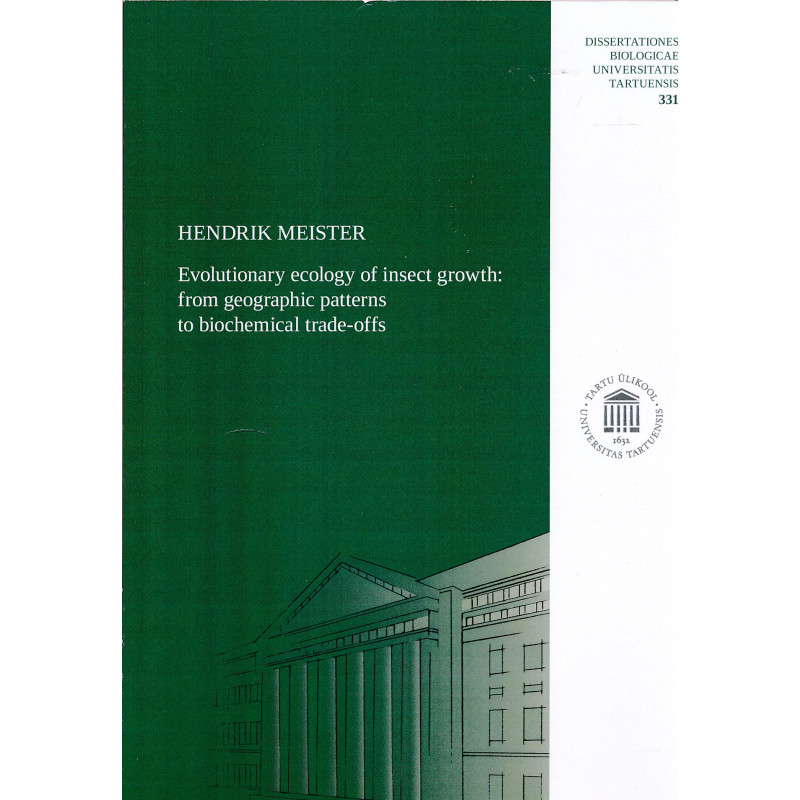



Tartu : University of Tartu Press, 2018
146, [1] p. : ill. ; 25 cm
ISBN: 9789949776535
Dissertationes biologicae Universitatis Tartuensis, 1024-6479 ; 331
Softcover new dissertation.
Doctoral theses defended at the University of Tartu, summary in Estonian.
Up until now there is no clear explanation why every insect species has an exact body size in nature. Larger body size is more beneficial, as larger females produce more offspring. At the same time, larger body size must have its costs, because otherwise we would witness unlimited increase in body size in the course of evolution. Comparing different geographical regions may be a way how to determine the effect of natural selection on body size. If at some areas the same species has larger individuals, we can connect body size with respective environments. We can also study how insects acquire larger body size, and as a result learn why larger body size is attained in some but not in other areas. Entomologists from university of Tartu reared six moth species originating from south and north Europe (41°N-65°N) in environmental chambers. The goal was to determine genetic variability in life history traits and immunity using same insect species from different latitudes. Surprisingly, individuals from south and north Europe grew at the same pace, despite all southern individuals being larger, and larger size was attained by longer development. Longer development denotes increased risk of being eaten before reaching pupal stage by (avian) predators. This probably is the cost of larger body size. Insect body size and development was affected also by temperature. We found that within species most individuals are affected the same way: there is lack of variability in dealing with temperature effects. As a result, insects might not evolve quickly, if environmental conditions change. In contrary, we found some among-population differences in immunity: northern individuals are more immune. Possibly because in the north insects may have the need to fight off more bacterial infections compared to their southern conspecifics.